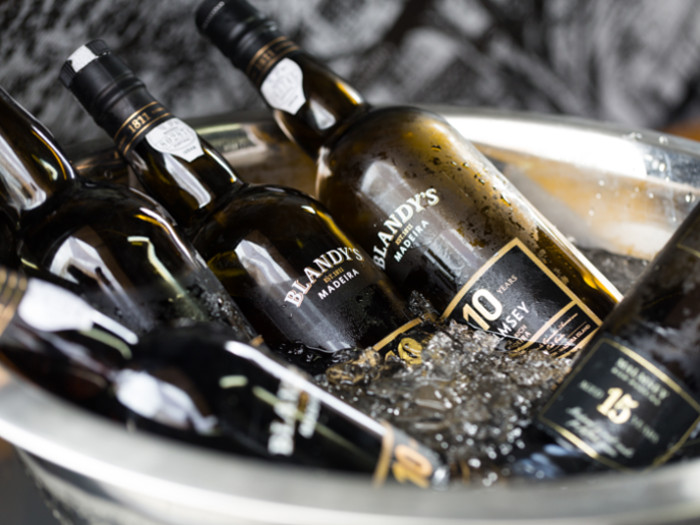Fortified wine isn’t something that most people are familiar with, but in many countries and regions of the world, these potables are the cultural staples.
What is Fortified Wine?
Fortified wine is a wine to which alcohol has been added to make it stronger. Typically, the spirit that is added is brandy, although sometimes ethanol or a neutral spirit, made from sugarcane or grain, is also used. The extra alcohol is usually added to the wine before the fermentation process is over, making the wine sweeter and stronger. The fortified wine was originally used as a preservative to help the wine stay viable on journeys, but it is now typically thought of as a dessert wine. Many different regional styles of fortified wine have been created over the centuries, although only a few have remained popular. [1] [2]

Fortified wines usually contain brandy. Photo Credit: Shutterstock
Types of Fortified Wine
There are many different types of fortified wines, including Commandaria, Madeira wine, marsala wine, mistelle, port wine, sherry, and vermouth among others.
- Commandaria: This is a Greek wine, native to Cyprus, aged in oak barrels and made with sun-dried grapes, resulting in a sweet, amber-colored wine.
- Madeira wine: This is a variety of fortified wine from the Madeira Islands off the coast of Portugal. It has a unique maturing process that includes heating the wine and exposing it to oxygen.
- Marsala wine: This comes from Sicily and comes in both fortified and unfortified versions. It is often used as a substitute for sherry or port in cooking.
- Mistelle: Also known as vin de liqueur, is a French grape wine fortified with brandy that is often added to other blends.
- Port wine: This comes from Portugal and refers to many different flavors of this potent wine variety.
- Sherry: This is a white wine fortified with brandy that comes from Spain and is available in both sweet and dry styles.
- Vermouth: This is a fortified wine, flavored with a closely guarded mix of herbal aromatics and spices, which was created to add to bad wine to make it taste better.
How to Make?
Fortified wines are those wines whose alcohol content has been increased at some point in the winemaking process. They are rather unpopular as compared to the commercial ones that people ought to go for. There are three ways to make fortified wine and they are as follows.
There are three typical ways for home winemakers to try their hand at making this unusual wine. First is by adding alcohol to a wide base before the start of fermentation, which will result in a very strong, very sweet drink. In another way, add alcohol during the fermentation process, which will kill the yeast and leave a strong sugar residue. This will make your wine similar to a port. Thirdly, add alcohol after the fermentation process. Simply mix the wine and your chosen fortifier, and then let it age for at least six months. Marsala and Madeira wines are both made in this way. [3]
Fortified Wine vs. Unfortified Wine
Most regulatory systems define the difference between fortified and unfortified wines as the ABV of the beverage. [4]
- In the US, fortified wine is anything between 16-24% ABV. [5]
- Unfortified wine is therefore defined as anything under 16%.
However, the colloquial definition of fortified wine is any wine to which additional alcoholic spirit has been added, regardless of the resultant ABV.
Risks & Side Effects
The risks involved with drinking excessive alcohol can be short term such as violence and injuries to long-term health risks such as chronic diseases. According to the Centers for Disease Control and Prevention, people who should not drink alcohol include women who are pregnant, individuals younger than 21 years of age, and people who are recovering from alcoholism or cannot control the amount they drink. Also, it should be avoided by people who are planning to drive or any other activity that required focus and skill. However, different countries have different rules on alcohol purchase and consumption. [6]
Also, cooking with alcoholic beverages results in only some loss of alcohol content. Foods baked or simmered in alcohol can retain anywhere from 4 percent to 85 percent of the alcohol, according to a study by the U.S. Department of Agriculture’s Nutrient Data lab. [7]
